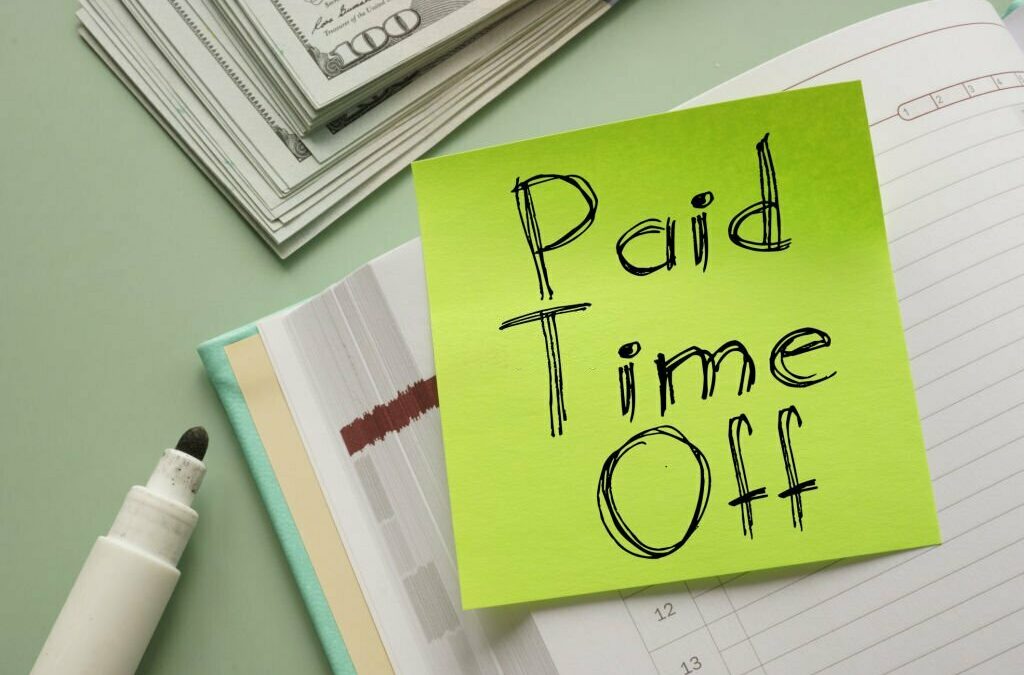Have you ever glanced at your paystub p and wondered, ‘Why would I have extra paid time off hours on my pay stub?’ This can be a pleasant surprise, but it’s important to understand why this is the case.
In this blog post, we at Check Stub Maker will explain the reasons behind extra PTO hours and working days in pay stubs by delving into the intricacies of how paid vacation days are accrued, including the process of Time Off In Lieu (TOIL).
Let’s get started!
What this article covers:
- Should Time Accrued Be on Pay Stub?
- Everything You Need to Know About Paid Vacation and How It Works
Should Time Accrued Be on Pay Stub?
Yes, it should. Based on our observations at Check Stub Maker, time, particularly with paid vacation days, is typically accrued based on the number of salary paystubs hours worked by employees.
This system can vary between companies, but generally, employees earn a certain amount of vacation time per pay period, which is reflected in their income docs paystub.
For instance, you might accrue a set number of hours or days of vacation per month or accrue them after working a specific number of hours.
This method ensures that the more you work, the more vacation time you accumulate, which is reflected on your Check Stub Maker pay stub, which you can create using our paystub maker.

Using Time Off In Lieu (TOIL)
Time Off In Lieu (TOIL) is a beneficial arrangement between employers and employees where the latter earns extra pay for working overtime but opts for extra time off instead.
As such, employees get additional time off without affecting their regular pay, while employers can manage extra workloads without the immediate financial outlay of overtime pay.
At CheckStub Maker, we help you make paystubs that ensure TOIL arrangements and similar work practices are clearly detailed without dates wrong on pay stub to provide transparency and accuracy in how your work hours and benefits are recorded.
Everything You Need to Know About Paid Vacation and How It Works
Paid vacation is when employees are allowed to take off from work while still receiving their regular pay. Through our practical knowledge, this benefit is typically accrued over time, based on the number of hours worked or the length of employment.
Essentially, it’s a way for employers to reward employees for their service, which ultimately contributes to job satisfaction and work-life balance.

Who Gets Vacation Pay?
Vacation pay is generally available to full-time employees, although some part-time positions may offer this benefit as well, with overall eligibility and the amount of paid vacation time varying between different employers.
Our findings show that vacation pay is often determined by the following factors:
- company policy
- employment agreements
- local labor laws
Paid Vacation Time Vs. Sick Days
While vacation days are used for personal time off, sick days are specifically for when an employee is ill or needs to care for a sick family member. Based on our first hand experience, the requirements for sick leave can vary by state, and some states have specific laws mandating paid sick leave.
What Happens To Unused Paid Vacation Days?
While some employers allow paid vacation days to carry over into the next year, others enforce a “use it or lose it” approach, where paid vacation days expire when they’re not used by employees.

Additionally, certain companies offer financial compensation for unused vacation days, particularly when an employee leaves the organization.
At Check Stub Maker, using our customizable pay stub creator ensures that your paid vacation days, used or unused, are always accounted for to show accuracy and transparency between employers and employees.
Can Employees Have A Negative PTO Balance?
Yes, they can, particularly when they take more paid time off than they’ve actually accrued. This usually happens with flexible PTO policies where employers allow employees to ‘borrow’ future vacations. While this offers more flexibility for employees, we recommend implementing careful management for both employers and employees to avoid significant negative PTO balances.
How Can An Employee Pay Back Negative PTO Hours?
Repaying negative PTO hours typically involves either working additional hours or having future PTO accruals applied against their negative balance. To ensure fairness and clarity, our findings show that this procedure should always be transparent and accepted by both the employer and the employee.

Conclusion
In this article, we’ve explored the various aspects of paid vacation, from accrual and usage to the handling of unused days and negative PTO balances.
At CheckStub Maker, we’re committed to providing clear, accurate paystubs that reflect all aspects of your compensation as an employee, including paid vacation and PTO.
So, explore our paystub generator at CheckStub Maker and fill out pay stub now for a seamless, user-friendly experience in managing your payroll needs – from your regular work hours to your PTO!
If you want to learn more, why not check out these articles below:
- Last 5 Months Paystubs
- Where to Get Paystub From Company That Has Closed Down
- Can We Backdate and Run Paystubs
- Paystub What Is Advice
- Why Does My Final Pay Stub Ytd Gross Not Equal My W2
- Period End Date on Paystub
- Pay Stub Twice a Week Due on
- Can I Use My Last Paycheck Stub to Get a Estimate on My Tax Return?
- Is There an Online Source to Figure Taxes with a Check Stub?
- Can You File Taxes If You Have All of Your Pay Stubs?
- Can I Use My Paystubs to File Taxes?
- What Is a Pay Stub?
- Imputed Income on Paystub
- What Is a Paycheck Stub?
- What Does Severance Mean on Paystub?




